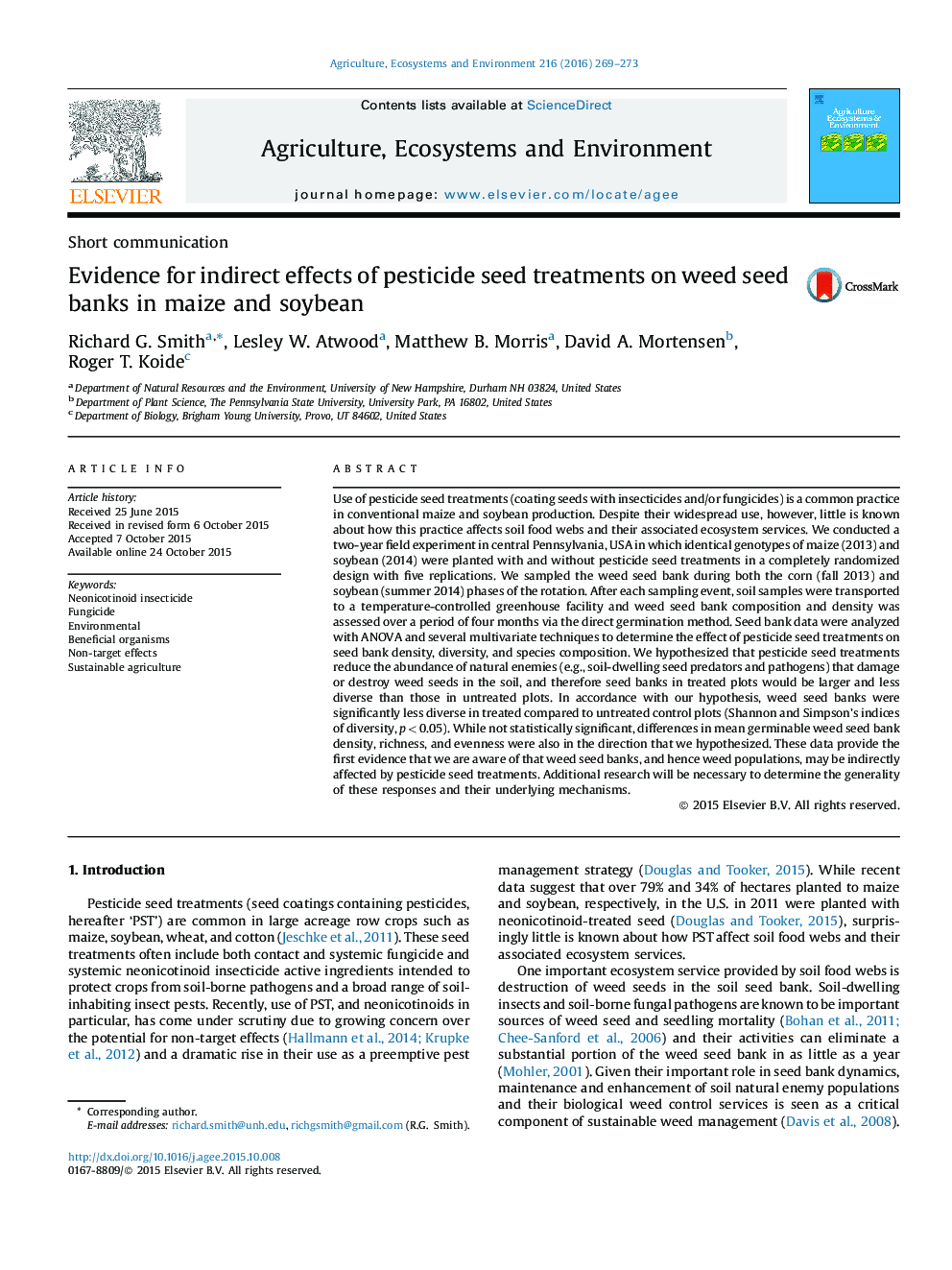| کد مقاله | کد نشریه | سال انتشار | مقاله انگلیسی | نسخه تمام متن |
|---|---|---|---|---|
| 2413648 | 1552036 | 2016 | 5 صفحه PDF | دانلود رایگان |
• Pesticide seed treatments are common in large acreage row crops.
• Natural enemies of weed seeds may be affected by pesticides.
• Pesticide seed treatments reduced the diversity of the soil seed bank.
• Trends in weed seed density, richness and evenness were consistent with our hypotheses.
Use of pesticide seed treatments (coating seeds with insecticides and/or fungicides) is a common practice in conventional maize and soybean production. Despite their widespread use, however, little is known about how this practice affects soil food webs and their associated ecosystem services. We conducted a two-year field experiment in central Pennsylvania, USA in which identical genotypes of maize (2013) and soybean (2014) were planted with and without pesticide seed treatments in a completely randomized design with five replications. We sampled the weed seed bank during both the corn (fall 2013) and soybean (summer 2014) phases of the rotation. After each sampling event, soil samples were transported to a temperature-controlled greenhouse facility and weed seed bank composition and density was assessed over a period of four months via the direct germination method. Seed bank data were analyzed with ANOVA and several multivariate techniques to determine the effect of pesticide seed treatments on seed bank density, diversity, and species composition. We hypothesized that pesticide seed treatments reduce the abundance of natural enemies (e.g., soil-dwelling seed predators and pathogens) that damage or destroy weed seeds in the soil, and therefore seed banks in treated plots would be larger and less diverse than those in untreated plots. In accordance with our hypothesis, weed seed banks were significantly less diverse in treated compared to untreated control plots (Shannon and Simpson’s indices of diversity, p < 0.05). While not statistically significant, differences in mean germinable weed seed bank density, richness, and evenness were also in the direction that we hypothesized. These data provide the first evidence that we are aware of that weed seed banks, and hence weed populations, may be indirectly affected by pesticide seed treatments. Additional research will be necessary to determine the generality of these responses and their underlying mechanisms.
Journal: Agriculture, Ecosystems & Environment - Volume 216, 15 January 2016, Pages 269–273
